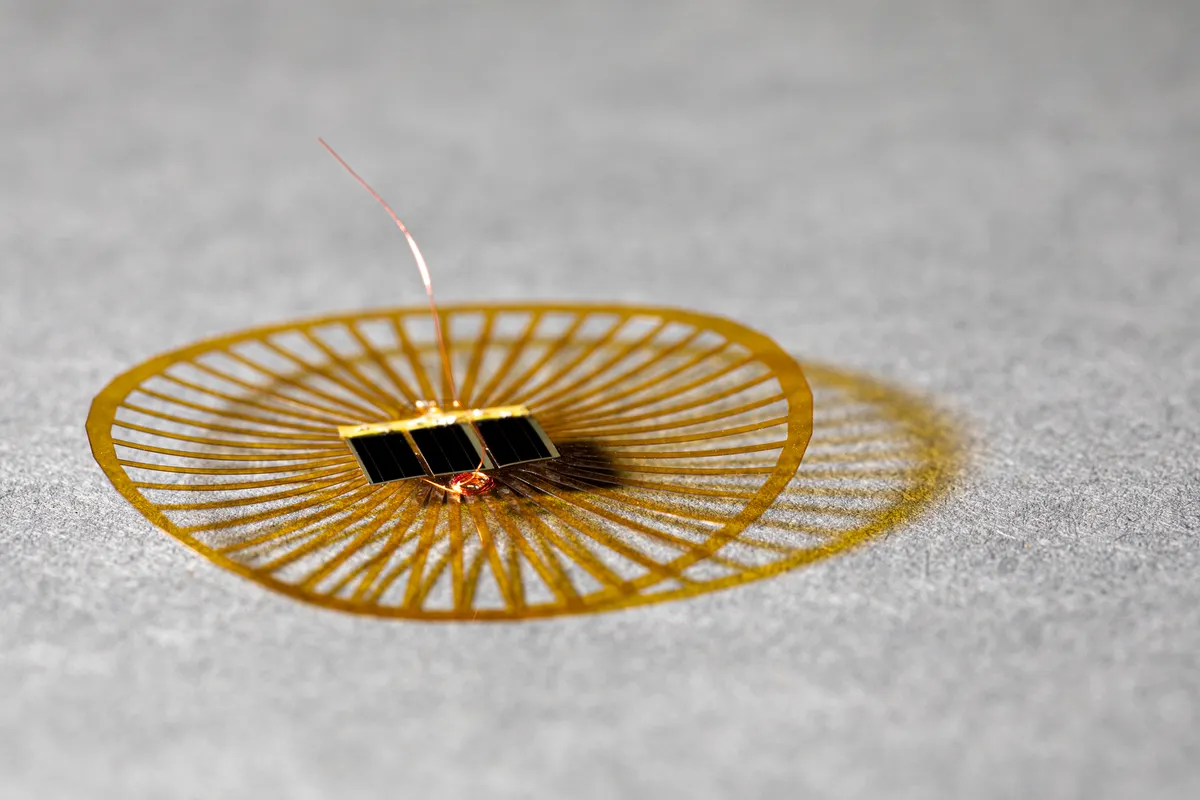Mimicking the way dandelion seeds travel through the sky, a team of researchers from the University of Washington have created a tiny battery-free sensor that can be carried long distances by the wind.
Sensors are often used in different environmental conditions to measure temperature, humidity, rainfall, light or other environmental factors. By using this sensor technology, researchers could cover wide spreads of land with thousands of sensors, without the time-consuming task of going out to place them themselves.
"The way dandelion seed structures work is that they have a central point and these little bristles sticking out to slow down their fall. We took a 2D projection of that to create the base design for our structures," said lead author Vikram Iyer, an assistant professor at the University of Washington, USA. "As we added weight, our bristles started to bend inwards. We added a ring structure to make it more stiff and take up more area to help slow it down."

These sensor-carrying devices are about 30 times as heavy as a 1 milligram dandelion seed. Despite this, they can still travel up to 100 meters with a moderate gust of wind. Each device can hold at least four sensors and once they’ve landed, can share data up to 60 metres away.
To keep the structure light, the team avoided the use of a battery and instead chose to use solar panels. This obviously comes with risks – both if the device is flipped with the panel facing down, and during the night when the panels aren’t getting light.
While the devices landed with the solar panels facing up 95 per cent of the time, the team still had the issue of keeping the device going overnight. Even when the Sun comes up, the devices then need a bit of energy before they can get started again.
"The challenge is that most chips will draw slightly more power for a short time when you first turn them on," Iyer said. "They'll check to make sure everything is working properly before they start executing the code that you wrote. This happens when you turn on your phone or your laptop, too, but of course they have a battery."

To resolve this, the team added capacitors to the design. These allow the devices to store enough charge to keep them working overnight.
“We've got this little circuit that will measure how much energy we've stored up and, once the sun is up and there is more energy coming in, it will trigger the rest of the system to turn on because it senses that it's above some threshold," Iyer said.
To get a better understanding of how far the devices could travel in the wind, the researchers dropped them from a drone. They varied the sizes of the devices to get a better spread of distances.
Because the devices don’t have batteries on board, there is nothing on the device that will run out of charge, allowing it to keep going until it breaks down. While this has obvious benefits, it also has the drawback of scattering electronics across a large environment.
The team are now looking into future uses of the technology. "This is just the first step, which is why it's so exciting," Iyer said. "There are so many other directions we can take now - such as developing larger-scale deployments, creating devices that can change shape as they fall, or even adding some more mobility so that the devices can move around once they are on the ground to get closer to an area we're curious about."
Read more:
